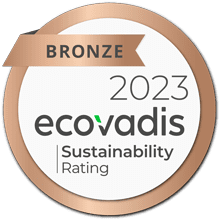Specialist
Former Head at Uralkali
Agenda
- Global potash demand update
- Output reductions, focusing on potential to retain pricing
- Impacts on Nutrien (TSE: NTR) and K+S (ETR: SDF) of Fertilizantes Heringer acquisition by Uralkali
- Outlook for muriate of potash (MOP) vs sulphate of potash (SOP)
Questions
1.
In light of the dropping demand, how have you observed demand changing over this year, and potentially into next year?
2.
What are the key drivers of the consumption and demand decrease?
3.
How would you say the cycle length is changing for global potash demand?
4.
How are you observing the potash tonnage decrease changing for MOP [muriate of potash] vs SOP [sulphate of potash]?
5.
You suggested demand recovery is fairly unlikely, but prerequisite on the trade deals going through between China and the US, what might a recovery entail and when would you expect it?
6.
What are your views on the structural decrease of MOP imports into China?
7.
In India, have you noted similar declines in imports as well as in China?
8.
Where globally is the majority of potash demand growth coming from?
9.
Outside of Brazil and Africa, are there any significant regions of growth?
10.
Nutrien has reacted to the demand constraints with a 700,000 tonne output reduction, Uralkali with 350,000-500,000, K+S with 300,000. Could you outline the rationale behind these reductions, aside from what they have released in their press statements? When would you expect this to come back online?
11.
Comparing the 1.3 million tonne reduction outlined by the three key players on aggregate with the 2-3-million-tonne drop you expect in relation to last year, do you expect BPC [Belarusian Potash Co] to come in with an additional reduction to fill out that gap or for that change in supply and demand to feed through into pricing? Will the inventory unwind allow for prices to remain as high as they are?
12.
You suggested we are at a flat level of price and this will probably be the stable level. If no further reductions happen, when do you think it will feed through into pricing given your estimates for demand reductions, and what price reduction would you expect due to those supply and demand changes?
13.
We highlighted Brazil as a key area for growth, driving around 60% of global growth for MOP. How would you assess the Heringer acquisition by Uralkali? How much of the total Brazilian market does Heringer accommodate and how can Uralkali benefit over Nutrien and K+S as a result?
14.
How much of the volume that Heringer was distributing pre-acquisition would you suspect was K+S and Nutrien’s product?
15.
Who is Uralkali pushing out as a result of the Heringer acquisition?
16.
How would you tie in K+S’s Bethune mine into this product quality analysis, and how might consumers shift their volumes to competitors as a result of this depressed demand situation?
17.
How much discount does K+S have to offer on its MOP compared to competitors as a result of the current poor quality?
18.
K+S is investing in sieving and cooling components to try and improve product quality. What impact do you think that will have on quality, and do you think it will be significant enough to reduce that pricing discount from EUR 10?
19.
I understand the Werra mine has a licence expiring in 2020 for storing saltwater, meaning K+S will try to store saltwater underground in unused parts of the mines. How would you assess the cost efficacy of this task? To what extent do you think it can store enough saltwater underground in the parts of the mine that are no longer used to keep up production volumes, or do you think this is too expensive and might it only do this for SOP rather than MOP?
Gain access to Premium Content
Submit your details to access up to 5 Forum Transcripts or to request a complimentary one week trial.
The information, material and content contained in this transcript (“Content”) is for information purposes only and does not constitute advice of any type or a trade recommendation and should not form the basis of any investment decision.This transcript has been edited by Third Bridge for ease of reading. Third Bridge Group Limited and its affiliates (together “Third Bridge”) make no representation and accept no liability for the Contentor for any errors, omissions or inaccuracies in respect of it. The views of the specialist expressed in the Content are those of the specialist and they are not endorsed by, nor do they represent the opinion of, Third Bridge. Third Bridge reserves all copyright, intellectual and other property rights in the Content. Any modification, reformatting, copying, displaying, distributing, transmitting, publishing, licensing, creating derivative works from, transferring or selling any Content is strictly prohibited


